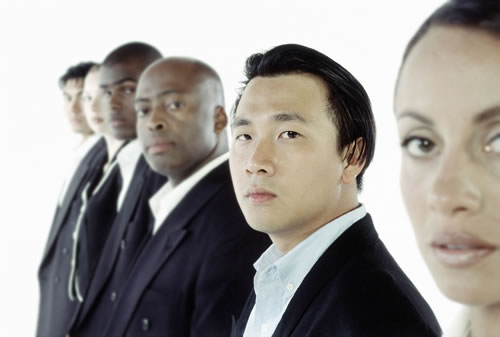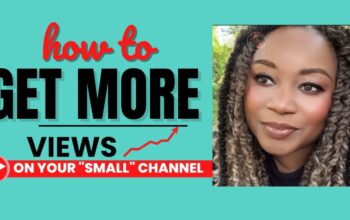 It is a vicious repeat episode of the movie Groundhog Day when it comes to discussing the absence of racial diversity in certain fields like journalism, tech journalism, tech, big LAW, [fill in profession here].
It is a vicious repeat episode of the movie Groundhog Day when it comes to discussing the absence of racial diversity in certain fields like journalism, tech journalism, tech, big LAW, [fill in profession here].
Not a fortnight passes during any given year over the past decade or so without there being a report, controversy, study, incident, slip up that triggers that age-old discussion about the virtual absence of and/or recognition of the existence of a pool of “qualified” minority and “talented” women candidates. [note qualifiers are reserved for these groups as anyone falling outside this segment is presumed qualified and talented I suppose unless proven otherwise]
Yesterday, welcomed yet another opportunity to examine and discuss, ad nauseum, these issues …again.
Google released its employment numbers in terms of race which revealed that there is 2% black, 3% Hispanic and 30% female representation among its employment ranks. It’s quite timely because earlier this week, a friend of mine from college, award-winning journalist Lisa Armstrong, who is an adjunct professor at CUNY School of Journalism in New York, posted her video from a panel discussion she moderated discussing diversity in journalism.
I promised myself and my Twitter followers to transcribe the plum parts of the 45 minute presentation which was made up of panelists Josh Freedom du Lac of The Washington Post, The Atlantic‘s Ta-Nehisi Coates, and Senior CNN Producer Rose Arce.
The best and most candid comments came from Arce, a Pulitzer-prize and Emmy-award-winning journalist who divulged that she had been at every single National Association of Hispanic Journalists convention for 25 years except two, had eaten with every recruiter in the broadcast journalism industry yet with all her experience and impressive accolades had never been recruited.
“They are choosing [to go to minority trade group conventions] with a completely different agenda,” Arce said. They attend diversity conferences as a check mark on their list of things to do and for the brochure but with no intention to hire people of color.
But seriously, if a top-notched superbly overly qualified journalist cannot get recruited, the rest of us are screwed.
“They will sit there and have dinner with 10 people that are qualified but won’t hire any,” Arce noted.
It is quite telling about how diversity is but a farce.
Arce referenced the very most common excuse recruiters and companies give for the lack of racial diversity in their staffs: they “can’t find qualified people.”
But as the event was held at CUNY J-School which annually graduates ample black and Hispanic journalists each year, “Are you trying to say only the White students are qualified then?” she asked.
This brings us the best part her talk when Arce listed the top reasons that employers give for not having diversity. The list itself, she explained, came about on her travels to sit on the panel. She decided to list out on the train(1) the reasons for diversity on one side of a sheet of paper and (2) the myriad of reasons she has heard employers give to explain lack of diversity among their employees on the other. The latter list was so long she ran out of room and time to even get to scribe the former.
Here it is:
1. Redefined Definition of Diversity: “We describe diversity differently,” they would remark, according to Arce. Employers will point to the fact there is a person from a rural area or an Irish person or someone from various regions of the country. This shifting of the definition is an excuse and a poor one.
2. Head Negro in Charge: At one time during the talk, Coates, while answering whether he felt he had a special duty to increase diversity as the one of a few writers of color on a predominantly white staff replied that he “never aspired to become the head negro in charge” as a child. But there is some truth to that joke. Arce noted that in companies with little to no diversity, there would always be a minority in a position like, “Senior Vice President of Diversity and Talent” or “ CEO of Diversity and Talent Recruitment”. There was the expectation that this one guy who clawed his way to the top was going to be the one to diversify the newsroom. Tres lame.
3. Diversity in Thought is Sufficient: Hiring managers will say that because their staff is diverse in their thinking and the areas they cover that is sufficient. Therefore, if they cover poor people and minority issues, there is no need to have a black person on staff too.
4. Holding out for Organic Diversity: It will happen organically, some companies will say, because younger people are more diverse. “I am 49-years old and I was told that at 21 and there are no more black and Latino people in the newsroom,” Arce said. “Young people aren’t really different. They may have a more diverse group of friends, but not more diverse. ” She pointed to the absence of racial diversity among the new crop of popular start up journalism organizations. The fact is people who do not have friends of color when they start their ventures will just hire their non-diverse friends. When Freedom du lac started a conversation on Twitter about how Vox.com has no black people on staff, he was called names (most famously by Slate‘s David Weigel who coined the new term “concern-trolling.”).
Apparently, pointing out flaws in an organization’s business plan is not a good thing.
5. Diversity by Osmosis: Companies will look to diverse elements or members of their staffs’ personal life and count that. Arne said she’d hear remarks like, “Joe is married to a Latino.” or “Mark Speaks Spanish.” and ” Suzie studied in Mexico in her year abroad. ”
“It’s like, ‘We have no Latinos but we are ‘Latino-ish’ and we have Latino in us,'” Arced added. Funny, yet not.
Interestingly enough, the dialogue and this list then could easily apply to any of the aforementioned professional fields.
A commenter to a Guardian story about diversity in journalism explained that success in journalism, and I’d say tech start up too, requires a large ego and boundless confidence in your own superior wisdom.
I submit that for minorities and women success when trying to break thru ceilings and barriers requires one to have the chutzpah to disrupt the comfort levels of those in power too.
Onus is on the Outsider
I figured it out earlier this year. The onus to diversify is often really placed on the groups wanting ‘in’. During the CUNY talk, a couple of the panelists mentioned how it is not sufficient to expect inclusion for the sake of diversity alone. You cannot just be a minority and expect to get in. “You have to be the model minority.”
Now isnt’ that something? Everyone else, can just be good enough, so long as they went to school with an insider or know a friend of a friend.
It’s almost like that famous Steve Martin quote that has been memeified in infinity:
“You have to be so good that they can’t ignore you.”
But I call B.S. on that too.
Case in point: Earlier this year, I attended an event with all of DC’s top tech folks during which all the members introduced themselves at the beginning revealing the room was indeed filled with the power players in the DC tech scene.
The issue of diversity came up followed with some discussion which I noticed made some of the white men in the room squirm. Naturally, some perhaps felt that all the chatter about the struggles minority and women deal with to survive and stand out, was an attack on them. Who knows.
Anyway, at the end of the event, I found myself in an elevator with three white men who all introduced themselves to one another personally. None reached out to me, even after, during the event, they heard me speak up and share how extensively involved I was with a tech connector and bridge for underserved groups.
As I walked behind them while we left the building, I sensed a bit of nervousness and maybe hesitation. And with that it became even clearer that we outsiders have to force ourselves into the conversation.
We have to break down any preconceived notions or discomfort the majority has. It’s unnatural. It’s a lot of excess pressure and many people do not have the comfort level to do that. It’s just one added burden.
So with that, when Google tried to explain that the dearth of minority and women entering STEM fields is a reason for its racial disparity in employment, some groups like The Washington Technology Project quickly come in and call BS because the non-tech positions were equally white-washed.
It’s about disruption. Just not the disruption the tech community usually talks about.
When more individuals and groups are willing to move to meet the outsiders half way at least, things will change.
Until then, this exhausting and cyclical replay of Groundhog Day will continue to repeat itself.
Jay Jay Ghatt is also editor at Techyaya.com, founder of the JayJayGhatt.com and JayJayGhatt.com where she teaches online creators how to navigate digital entrepreneurship and offers Do-It-For-You Blogging Service. She manages her lifestyle sites BellyitchBlog, Jenebaspeaks and JJBraids.com and is the founder of BlackWomenTech.com 200 Black Women in Tech On Twitter. Her biz podcast 10 Minute Podcast is available on iTunes and Player.fm. Follow her on Twitter at @Jenebaspeaks. Buy her templates over at her legal and business templates on Etsy shop!


